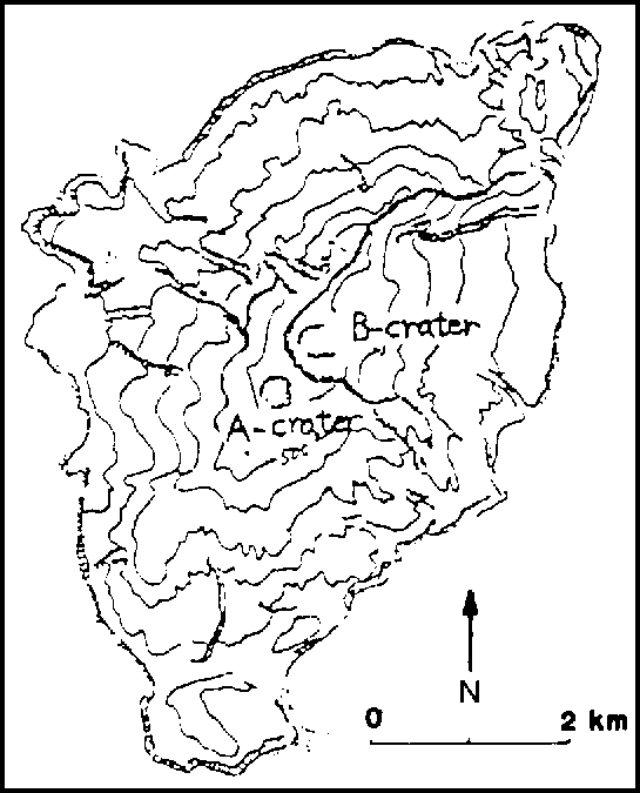Report on Suwanosejima (Japan) — October 1981
Scientific Event Alert Network Bulletin, vol. 6, no. 10 (October 1981)
Managing Editor: Lindsay McClelland.
Suwanosejima (Japan) January-August 1981 explosions tabulated
Please cite this report as:
Global Volcanism Program, 1981. Report on Suwanosejima (Japan) (McClelland, L., ed.). Scientific Event Alert Network Bulletin, 6:10. Smithsonian Institution. https://doi.org/10.5479/si.GVP.SEAN198110-282030
Suwanosejima
Japan
29.638°N, 129.714°E; summit elev. 796 m
All times are local (unless otherwise noted)
During 1981, explosions from Suwanose-jima have been recorded every month through August. Observations were made from 3 km S of the active B crater (figure 1) and from Nakano-shima Island, 26 km NE. An explosion is registered when visual observation of an eruption cloud is correlated with the sound of an explosion. Aircraft crews reported three eruption clouds: 28 June, cloud height 1.2 km; 17 July, 2.4 km; and 10 August, 2.7 km.
Geological Summary. The 8-km-long island of Suwanosejima in the northern Ryukyu Islands consists of an andesitic stratovolcano with two active summit craters. The summit is truncated by a large breached crater extending to the sea on the E flank that was formed by edifice collapse. One of Japan's most frequently active volcanoes, it was in a state of intermittent Strombolian activity from Otake, the NE summit crater, between 1949 and 1996, after which periods of inactivity lengthened. The largest recorded eruption took place in 1813-14, when thick scoria deposits covered residential areas, and the SW crater produced two lava flows that reached the western coast. At the end of the eruption the summit of Otake collapsed, forming a large debris avalanche and creating an open collapse scarp extending to the eastern coast. The island remained uninhabited for about 70 years after the 1813-1814 eruption. Lava flows reached the eastern coast of the island in 1884. Only about 50 people live on the island.
Information Contacts: JMA, Tokyo.


